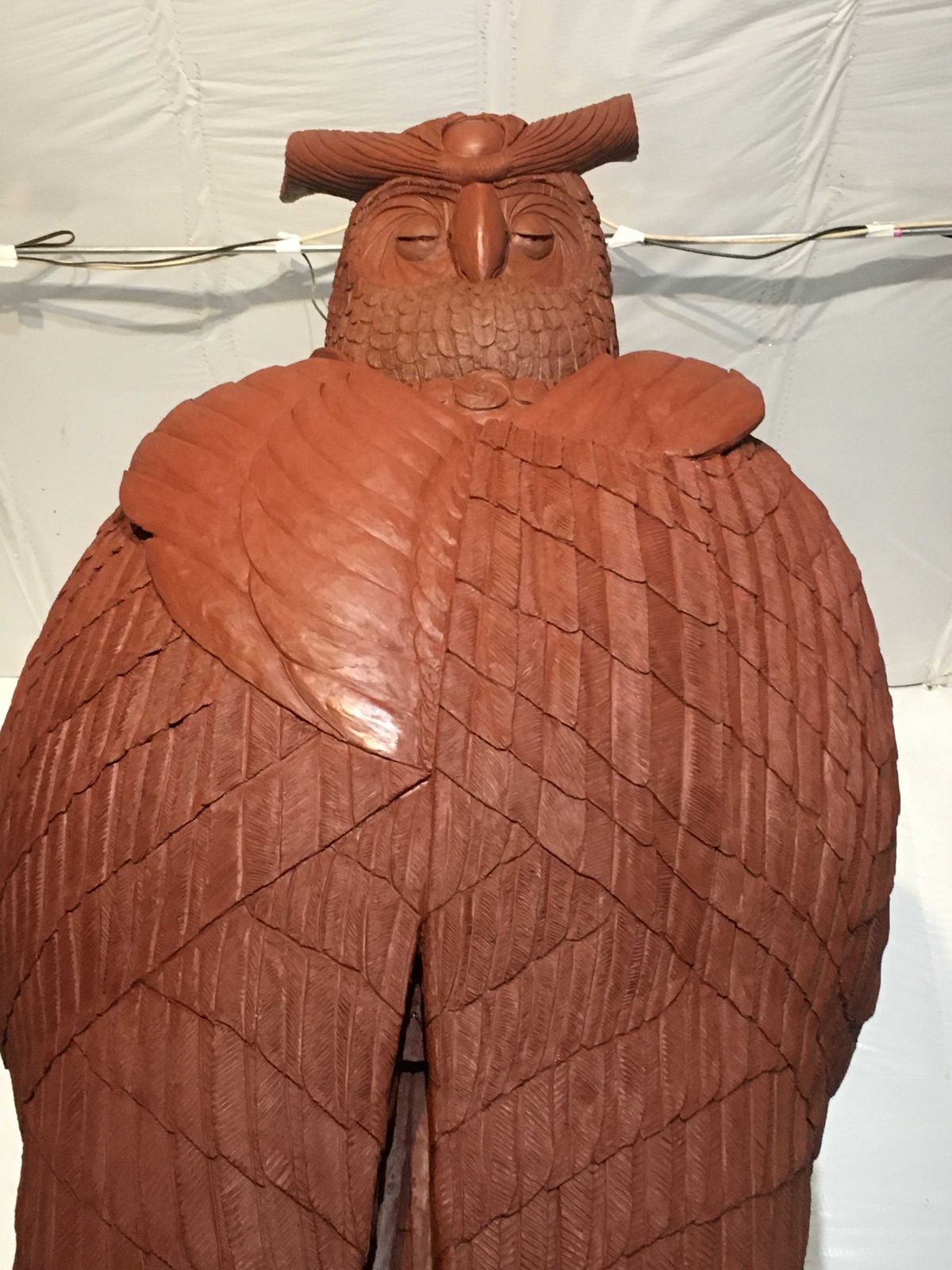Sculptor Wataru Sugiyama’s natural works incorporate many cultures

Japanese sculptor Wataru Sugiyama is a soft, gentle soul living life in browns, navy and stone-colored clothes that match Earth’s elements. His walk with nature is his life’s work. A sculptor for the past 30 years, Sugiyama’s works are from natural resources, as his materials range from bronze and clay to stone and ceramics.
“I don’t have a complicated recipe, but my ultimate goal is to make sculptors (come) alive as if their soul or life is in it,” Sugiyama said. Now Sugiyama will introduce the collection of souls that glitter within his work for Marmot Art Space’s First Friday, making his Inland Northwest debut. “I truly enjoy exploring the meaning of life through my sculptures,” Sugiyama said. “This is my contribution to our world.”
Born in Tokyo, Sugiyama began with a career in civil engineering but found that the good pay and long hours depleted his time and energy for other aspects of life. One day, in the height of his craft, Sugiyama found himself detached and uninterested when an epiphany ended his seven-year career at one of Japan’s top engineering firms.
“I was drawing blueprints and smoking a cigarette one day, and I just said, ‘Oh, this is just not really my life, and I got to find what I really want to do with my life,’ ” Sugiyama said. “I took a journey to the U.S.” He moved to Ashland, Oregon, in 1986 to pursue a degree in communications from Southern Oregon University. Art electives are required for a communications degree, so Sugiyama knocked those classes out with a beginners’ sculpting and info art course.
Now Sugiyama’s work reunites with his inner child. A few months ago, Sugiyama finished a 13-foot ceramic owl sculpture. Though it was a new step in his artistry, it made him nostalgic of his first run-in with art.
“I remember my first sculpture, it was super kindergarten-like, like a fish,” Sugiyama said. “When I was taking that art elective, I did not intend to be an artist at all but, after that, I really got into it. I didn’t think it’d be my career or profession, but it was my very first time I felt free.”
English teacher Alice Cole was one of Sugiyama’s inspirations in pursuing his art full time and acclimating to the American art world. Sugiyama started to make friends in the local art scene. His classmates were local sculptors and pottery makers who stressed the importance of making a living in his craft.
As a naturalist first, Sugiyama finds the most important aspect of sculpting is to “walk with nature.” As he switched to pursuing an art degree, Sugiyama found himself back in his native element of ancient Japanese art. The style incorporates an appreciation of nature and surrounding environments, including trees, animals and architecture.
“Japan is kind of a homogeneous culture, but when I came to the U.S., which is a melting pot with people from all over the world, they introduced me to these kinds of sculptures that had elements of my Japanese culture and heritage. I think I combined many other cultures’ elements, and that’s what makes my sculptures extremely unique,” Sugiyama said.
If he sees his now-sold sculptures in public, such as the stone-carved mountain at Ashland Public Library, he’ll “refresh their spirits” by pouring buckets of water in an act of rejuvenation.
Sugiyama’s work spread beyond southern Oregon in the 1990s, giving the Inland Northwest an authentic look at his meticulous crafts.
Marshall Peterson, chief curator of Marmot Art Space in Kendall Yards, found Sugiyama’s work “substantial and refreshing,” as he anticipates introducing Spokane to him. Peterson also praised Sugiyama’s mastery throughout the decades, especially with an engineering job glistening with financial certainty.
“Even though he’s living here, and becoming part of the culture, he’s still bringing something that most Spokanites haven’t seen. We’re relatively close to Japan, but we’re not a coastal city, and getting someone here in the Inland Northwest feels really remarkable and stimulating,” Peterson said.
However, Sugiyama’s work speaks to Peterson’s goal of diversifying Spokane’s art palette. A Spokane native, Peterson spent a decade living in Mexico with a yearlong residency in Berlin.
“So, I’ve seen thousands of shows around the world, and I try to bring back that vision and what someone would think is just incredible art,” Peterson said. “The people that I choose are usually longtime professionals, so they’re usually the best of the best.”
Peterson said Sugiyama adding to Spokane’s art ecosystem is “a big deal” for a midsize city to host a man who reflects a culture that is 5,000 miles away. It is Sugiyama’s first First Friday gallery at Marmot, filling the 18-by-18 foot, all-white space with small- and large-scale animals made from natural materials.
The exhibition is a moment in Sugiyama’s purpose, something that confirms his life purpose and the way he’d like to live the remainder of it. “I have no problem returning my soul to the universe today because I got in my calling and found these total, blissful experiences that I won’t regret with this path that I chose,” he said.